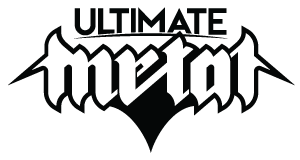Glenn Fricker
Very Metal &Very Bad News
To answer both questions:
#1) Why my business doubled: I switched from Sonar 3 to Saw. At the time, Saw had a far cleaner mix buss than Sonar's. I understand there have been updates to Sonar in the meantime, particularly to the mix engine. However, my mixes did improve. But that's not the only reason. Due to being written in assembler, Saw is far, far, faster. This allowed me to work faster, and produce a better product more efficiently. Thereby freeing up time to work with even more clients. It's not bullshit, I've got the invoices to back it up. I understand the assembler thing is quite controversial around here, but I'm speaking from experience.
#2) What can it do that others can't? Well for starters, You can cut 12 tracks of drums to a click, do six takes, stack them on top of each other, and then fly them in & out of the mix without stopping playback. It's also great for coming vocals & guitar solos this way.
There's the softedge feature, which drops a micro crossfade onto every punch in, so no clicks, ever. This is also customizeable to every region in the multitrack, with no limits on lengths. Massive possibilities.
Others: reverse gates for auto edits... sidechain compressors on every channel (not unique, but a great deal of Daws are missing this feature) the ability to link 6 PC's together via TCP/IP for massive processing power (maybe if you're doing a movie soundtrack, or using a laptop for remote control from a drum room) and, the most unique feature of all, it's programmed in assembler by a guy who's been writing assembly code since 1982. It's the fastest DAW in existence. Flame away.
-0z-
#1) Why my business doubled: I switched from Sonar 3 to Saw. At the time, Saw had a far cleaner mix buss than Sonar's. I understand there have been updates to Sonar in the meantime, particularly to the mix engine. However, my mixes did improve. But that's not the only reason. Due to being written in assembler, Saw is far, far, faster. This allowed me to work faster, and produce a better product more efficiently. Thereby freeing up time to work with even more clients. It's not bullshit, I've got the invoices to back it up. I understand the assembler thing is quite controversial around here, but I'm speaking from experience.
#2) What can it do that others can't? Well for starters, You can cut 12 tracks of drums to a click, do six takes, stack them on top of each other, and then fly them in & out of the mix without stopping playback. It's also great for coming vocals & guitar solos this way.
There's the softedge feature, which drops a micro crossfade onto every punch in, so no clicks, ever. This is also customizeable to every region in the multitrack, with no limits on lengths. Massive possibilities.
Others: reverse gates for auto edits... sidechain compressors on every channel (not unique, but a great deal of Daws are missing this feature) the ability to link 6 PC's together via TCP/IP for massive processing power (maybe if you're doing a movie soundtrack, or using a laptop for remote control from a drum room) and, the most unique feature of all, it's programmed in assembler by a guy who's been writing assembly code since 1982. It's the fastest DAW in existence. Flame away.
-0z-



